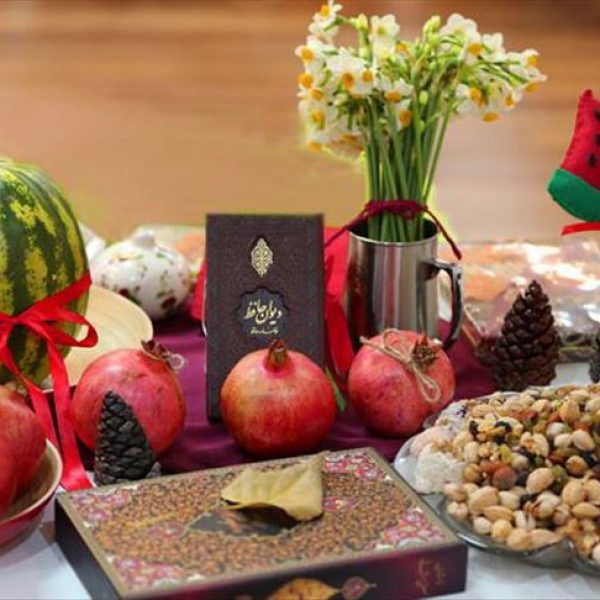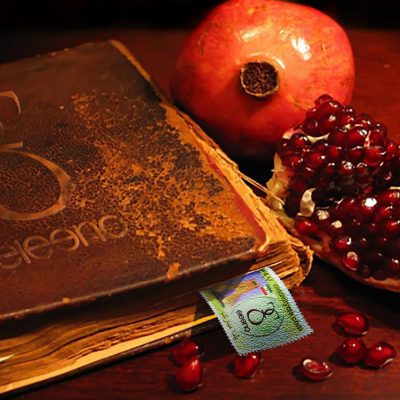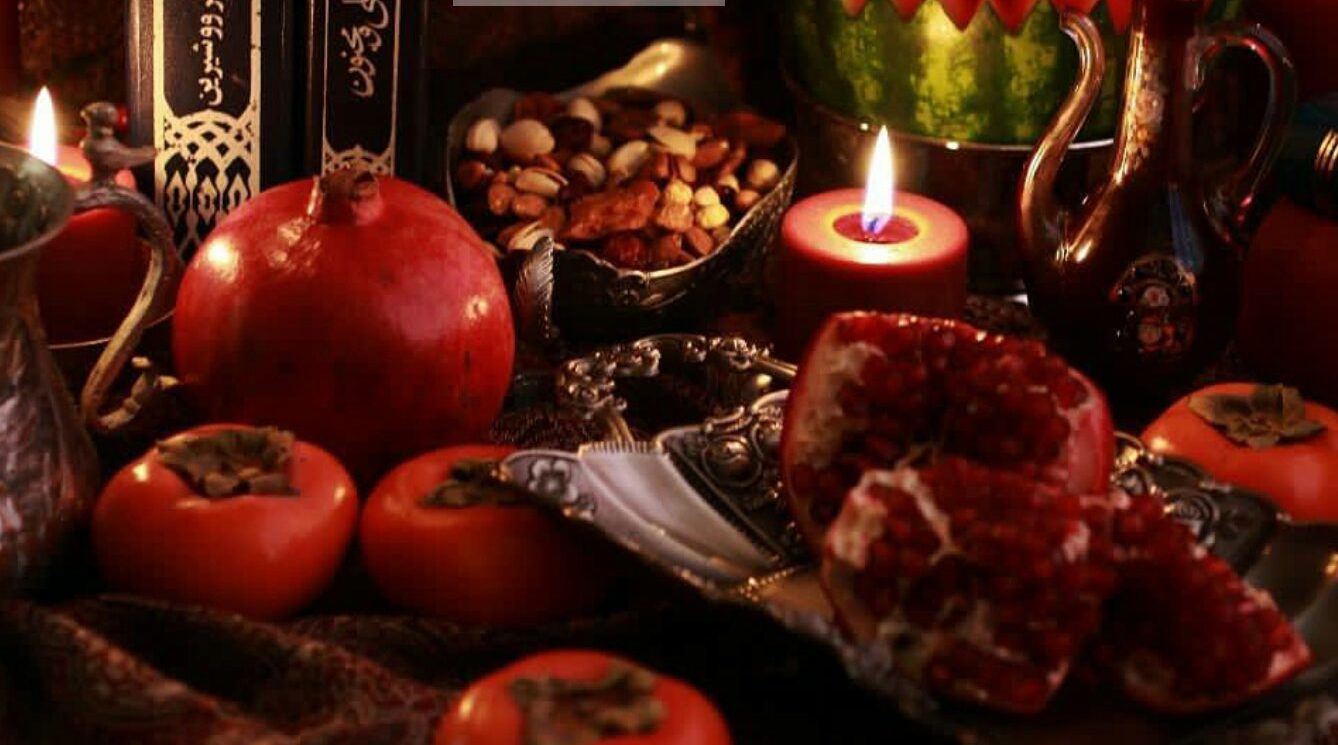Yalda Night or Shab-e Yalda is one of the most ancient fall/winter festivals in Iran. Notably, other famous names of this event are Zayeshmehr and Shab-e Cheheleh. Accordingly, on December 21st, the last day of Azar on Persian calendar, Iranians celebrate this night every year. Actually, the last day of Azar is the last day of autumn. When this day ends, the longest night of the year falls. Then, out of the darkness of the night, the first day of winter begins. Overall, Yalda Night has always been an occasion for families, friends, and their loved ones to get together. However, it is not a simple gathering, rather a celebration of a symbolic Persian night. In this post, we will get more into the antiquity and symbolic importance of this ancient celebration. Also, we will be talking about how Yalda Night is celebrated and what its interesting traditions are.
How Yalda Night became a special event
Yalda Night festival became a national event in 502 BC by the Achaemenid King, Darius the Great. According to this, the festival takes its origins from the Zoroastrian religion practice by the Achaemenids. However, there are several stories behind the history of this event. In ancient times, farming was the main occupation of many people. That is why, overtime, the duration of day and night and the change of seasons became an interest to people. They started to associate night with darkness and infertility and day with light and prosperity. That is why all the mythologies and symbolic stories about this night originates from this idea.
Mithra, the Zoroastrian Angelic Divinity and Yalda Night
Out of these many stories, there is the main one that is related to the goddess, Mithra. Accordingly, The Mithraists considered Mithra as the goddess of light and fertility. With the birth of Mithra or Mehr on Yalda Night, the evil of the night is defeated. In other words, this night’s celebration is symbolically related to overpowering the dark. Now, we can see how an astronomical event gained an important symbolic significance overtime. That is why many countries, including Iran, still celebrate this night. Accordingly, this ancient celebration influenced some traditions of other countries and nationalities. Below, we will be talking about the main customs and traditions of Yalda Night.

The traditions of Yalda in ancient Iran until Today
As we mentioned before, this festival was a chance to celebrate the birth of light. There was always a set of customs done by people on this night. However, some of the customs and traditions of the ancient times have been forgotten today. Moreover, in different cities in Iran or even in different countries, there are some additional traditions related to this festival. Here, we will be talking about the main traditions of Yalda Night in ancient and modern Iran.
Zoroastrians’ Traditions in Ancient Iran
Ancient Persian people celebrated this night by gathering around a set table called Myazd. A white cloth covered the Myazd. People would then spend the night by the fire next to this table, celebrating the night till the morning. Also, there were seven main symbolic items on this table which were:
- A milky drink or food (symbol of animal’s guardian)
- Fire or a lanthorn ( symbol of nature’s guardian)
- A special metal tray filled with fruit, dried fruits, and nuts ( symbol of metal’s Guardian and angel)
- Water as again a symbol of its guardian
- A type of flower (a symbol of immortality)
- the Avesta, the Zoroasterian holy book
Also, some people would sit by the hillside of Alborz Mountain to watch the sunrise. This was due to the reason that Alborz Mountain, according to some, is where the goddess of light was born.
Nowadays in Iran
Every year, on this night, thousands of people gather to celebrate this ancient and symbolic event. A few days to Yalda Night, they start shopping for the food on their Yalda table. As a tradition, most families gather at the house of the eldest in the family. Interestingly, in each region or even family in Iran, there are different traditions for celebrating Yalda. Today, however, this celebration is going through modernization. Yet, there are still many traces of the ancient and symbolic traditions.
Today many celebrate Yalda Night by:
- Gathering around ‘Korsi’ which is a type of Iranian table with a heater placed under it over a blanket.
- Serving Watermelon (eating this summer fruit was in ancient times believed to make you ready for the cold winter).
- Eating Pomegranates with angelica powder (as a symbol of fertility and cycle of life). According to some, the color of pomegranate is a representation of the dawn. Its seeds also represent the glowing seeds of life.
- Serving other winter fruits such as pumpkins, persimmon, boiled beet, and more.
- Preparing Ajil-e Yalda which is a mixture of different nuts.
- Reciting old mythologies by usually the eldest of the family. Most of these stories originate from the Shahnameh, an epic book written by the Persian poet Ferdowsi.
- Reading their fortunes by reciting from the poems of Hafez, a famous Persian poet.
When and where is this Night Celebrated?
Every year, on December 21st, people around Iran and even the world celebrate this event. Some also find this celebration similar to Jewish Festival of Hanukkah and Christmas Day. This is due to the reason that these events also have associations with birth and celebrating winter. Moreover, below is the list of other countries that celebrate this very event:
- Caucasian countries such as Azerbaijan and Armenia
- Afghanistan
- Tajikistan
- Uzbekistan
- Turkmenistan

Other national events in Iran
All year round, there are plenty of national festivals and events held in Iran. These festivals have different ancient and religious roots. Also, some of them became a part of Iranian National heritage overtime. However, many of them became only a part of the history. Accordingly, only small communities around Iran celebrate some of them. The main Iranian, ancient, and even Islamic events in Iran are:
- Chaharshabeh Souri, the celebration of the last Wednesday of the year.
- Nowruz celebration of the New Persian Year.
- Sizdah Bedar, the 13iest day of the new year.
- Mehrgan Celebration, a festival of Mehr or Mithra
- Sadeh Festival, a mid-winter celebration
- Sepandarmazgan, the day of love
- Ashura and Muharram Mourning Ceremony, in remembrance of Imam Hossein
- Ramadan and Eid-e Fetr celebration of fast-breaking
For more information about Iranian, Zoroastrian, Islamic festivals, and other events and celebrations you can check out our blog’s posts.


Comment (0)